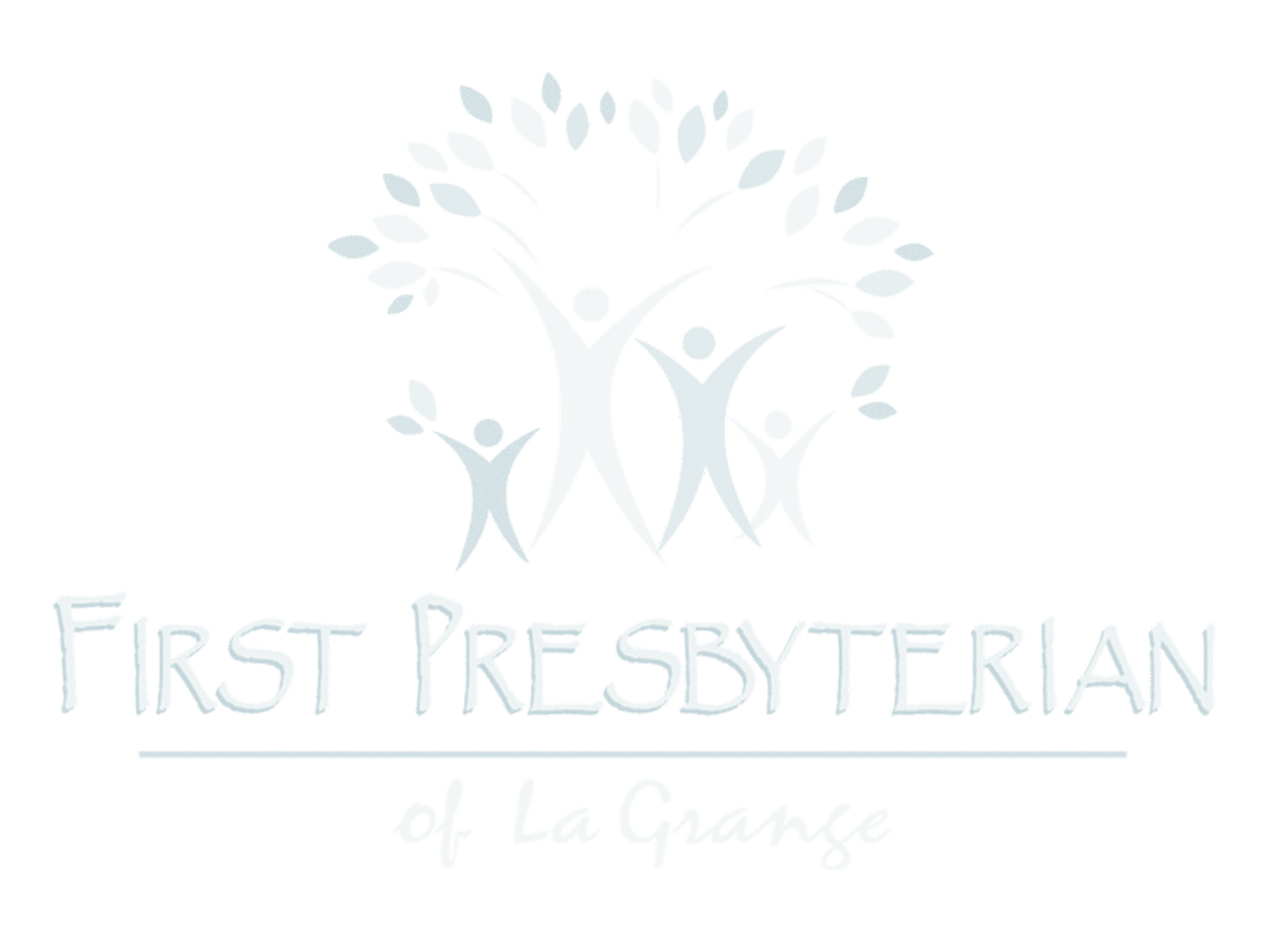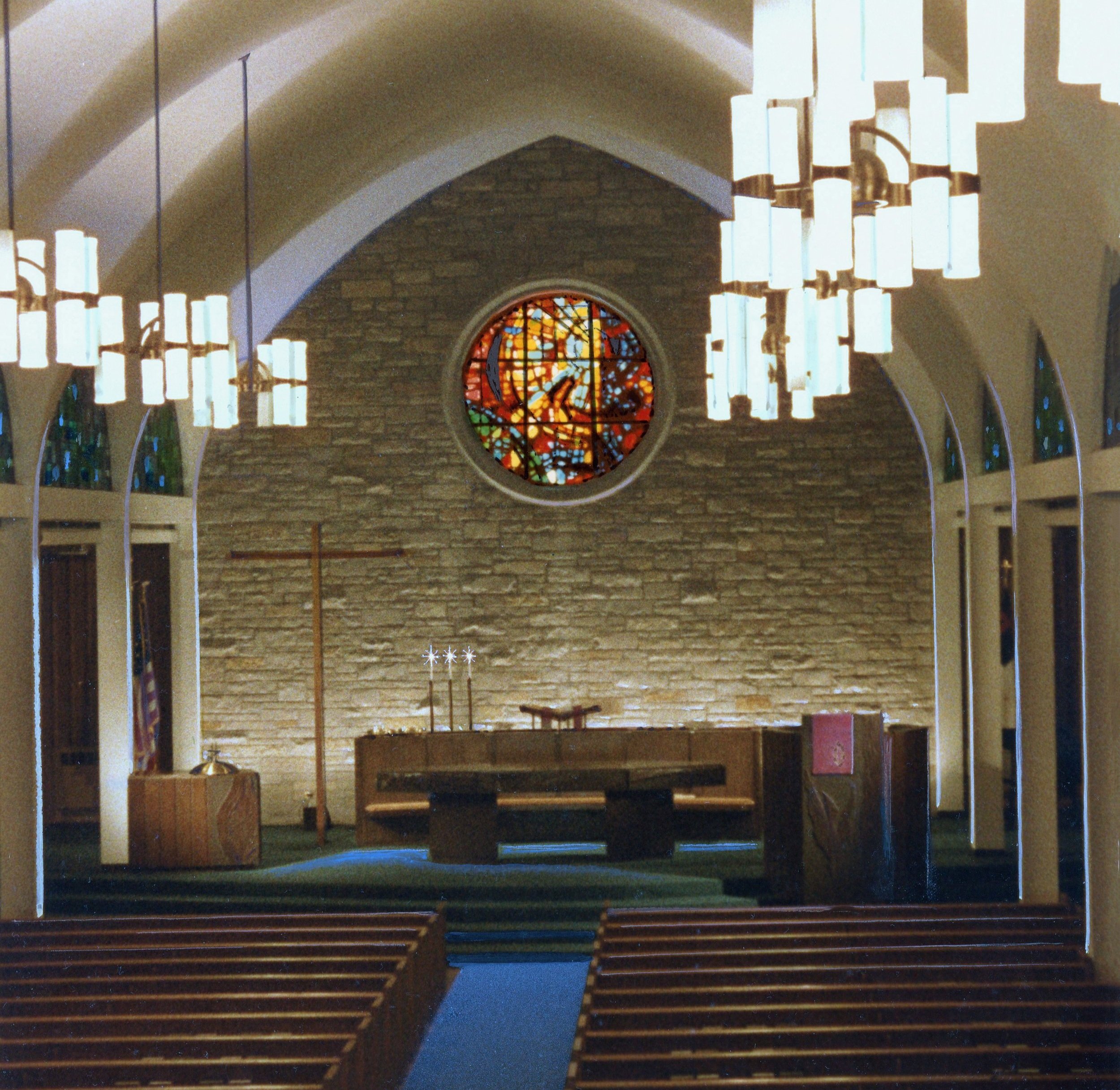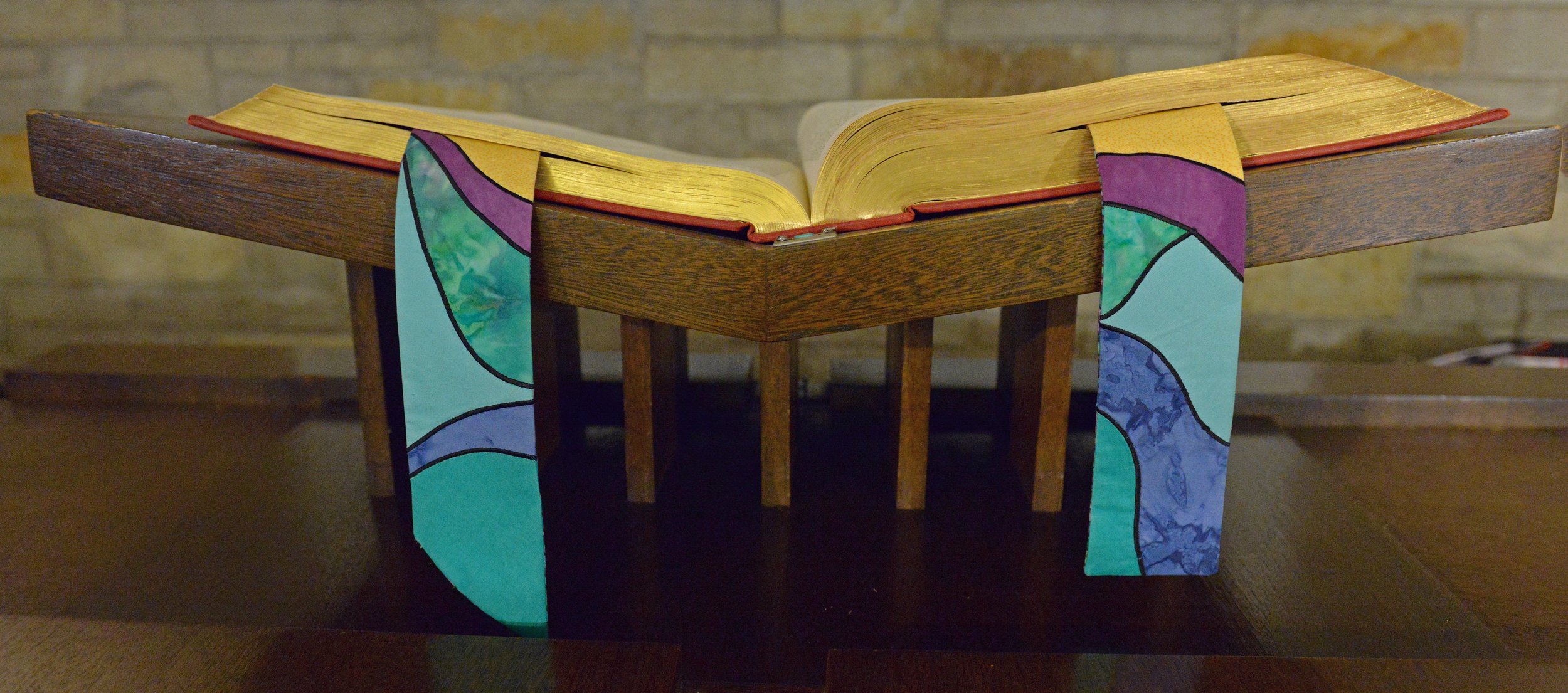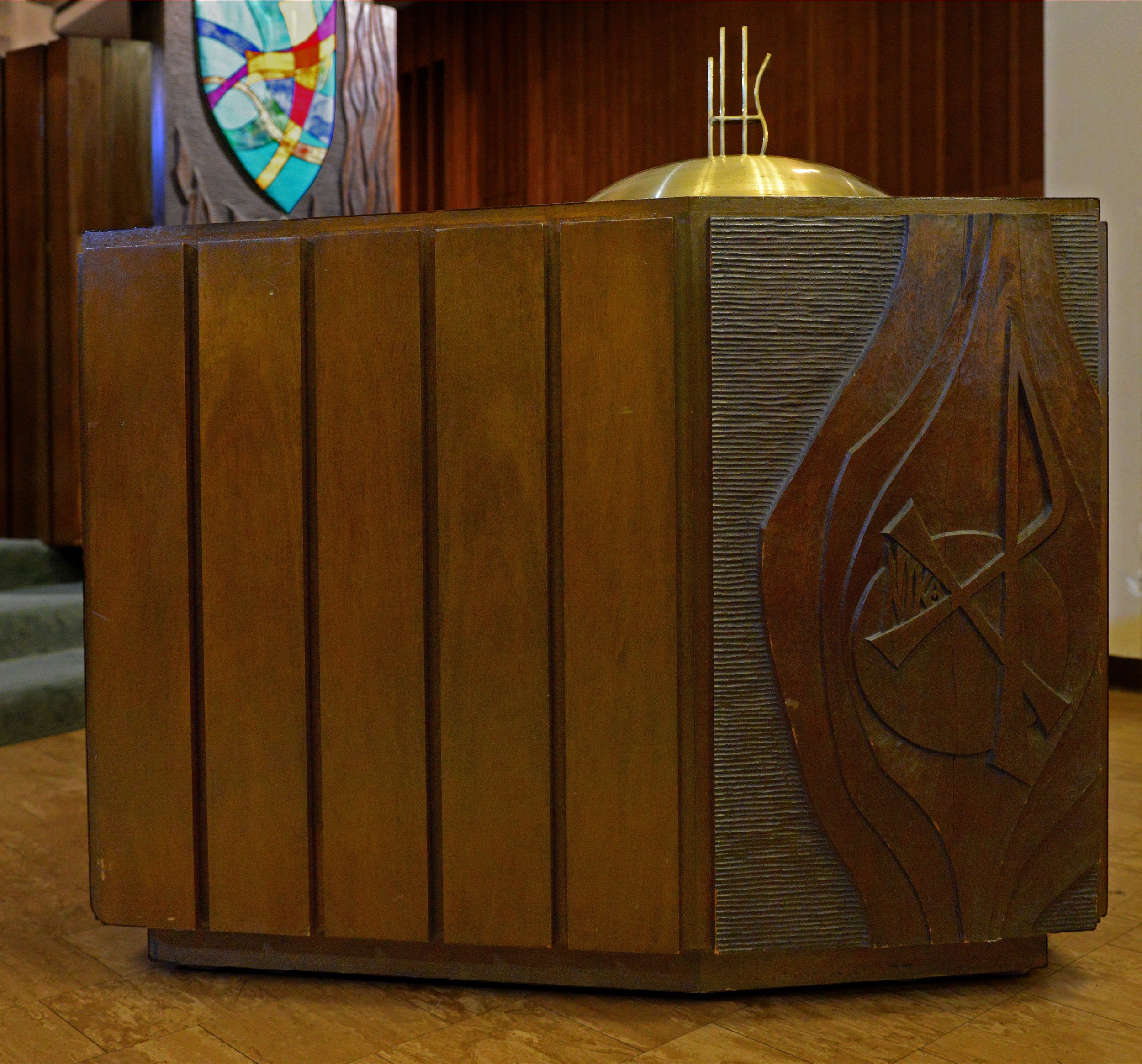Symbolism in the Sanctuary
previous page: symbolism in the church
The Sanctuary, with seating for 412, is distinguished by the soaring beauty of the ribbed vaults of the ceiling, which at its highest point is 30 feet above the floor. The width from east to west wall is 41 feet. Before the Narthex renovation in 2015, the length from the chancel to the Narthex glass doors was 131 feet. To enlarge our Narthex area, five pews on each side were removed, and the new aisle length is now 116 feet. The previous Narthex was 41 feet wide by 18 feet deep. The current Narthex is almost double that size.
Differences in texture and color—the white plaster piers and ceiling, the warm oak tones of walls and pews, the lights and darks in the rough stones of the chancel wall, and the radiance of colored light refracted from the faceted glass window—all enhance the beauty of our house of worship without disturbing the clean, uncluttered lines of the basic design which focuses the worshipper’s attention on the chancel. This was a marked difference from our second church.
1912 Sanctuary
1962 Sanctuary
In the chancel are strong visual proclamations of the essence of our Christianity. The first person of the Trinity, God the Father and Creator, is symbolized in the design of the window.
“and darkness was upon the face of the deep…And God said, ‘Let there be light,’ and there was light.”
Emerging from the darkness at the right of the window, a glowing sun, ancient symbol of God, sends shafts of light down upon the deep blue waters and the green orb of the earth.
The chancel’s strong, simple free-standing cross symbolizes the second person of the Trinity, Jesu Christ, the Son of God. On such a cross as this He poured out His life for mankind. Ours is an empty cross: we worship the living Christ who was resurrected from the dead.
In the carving on the front of the pulpit, the third person of the Trinity, the Holy Spirit, is represented as a flaming dove. This unusual symbol combines the dove of Jesus’ baptism with the tongues of flame touching each apostle at Pentecost. Preaching is thus defined as the work of the Holy Spirit, whereby truth is revealed to the listener with swiftness and searing intensity. The octagonal shape of the pulpit has symbolic meeting. The number “8” is an ancient abstract sign of regeneration.
The chancel furnishings, in their nature and arrangement, suggest the cardinal principles of our Reformed tradition. At the back and center of the chancel is the lectern on which rests the open Bible, the Written Word of God. To it we turn for divine truth. The Communion table represents the Enacted Word of God, the means of grace by which we are reminded of the life, death and resurrection of Jesus Christ. The position of the table suggests the centrality of the Incarnate Christ in our faith and the importance of the sacrament of Communion. The pulpit stands for the Spoken Word.
The baptismal font is located in the chancel to show the importance of baptism as the second sacrament of the church. The Christian monogram (signifying Jesus) appears on the brass cover. Covered in the front of the font is a sun, the symbol of re-birth, and associated with it the monogram XP (Christ) and the Greek word NKA, meaning victor. These symbols convey the idea that just as Jesus Christ is victor over death, so through baptism the Christian dies to sin and is victoriously born to “newness of life.”











